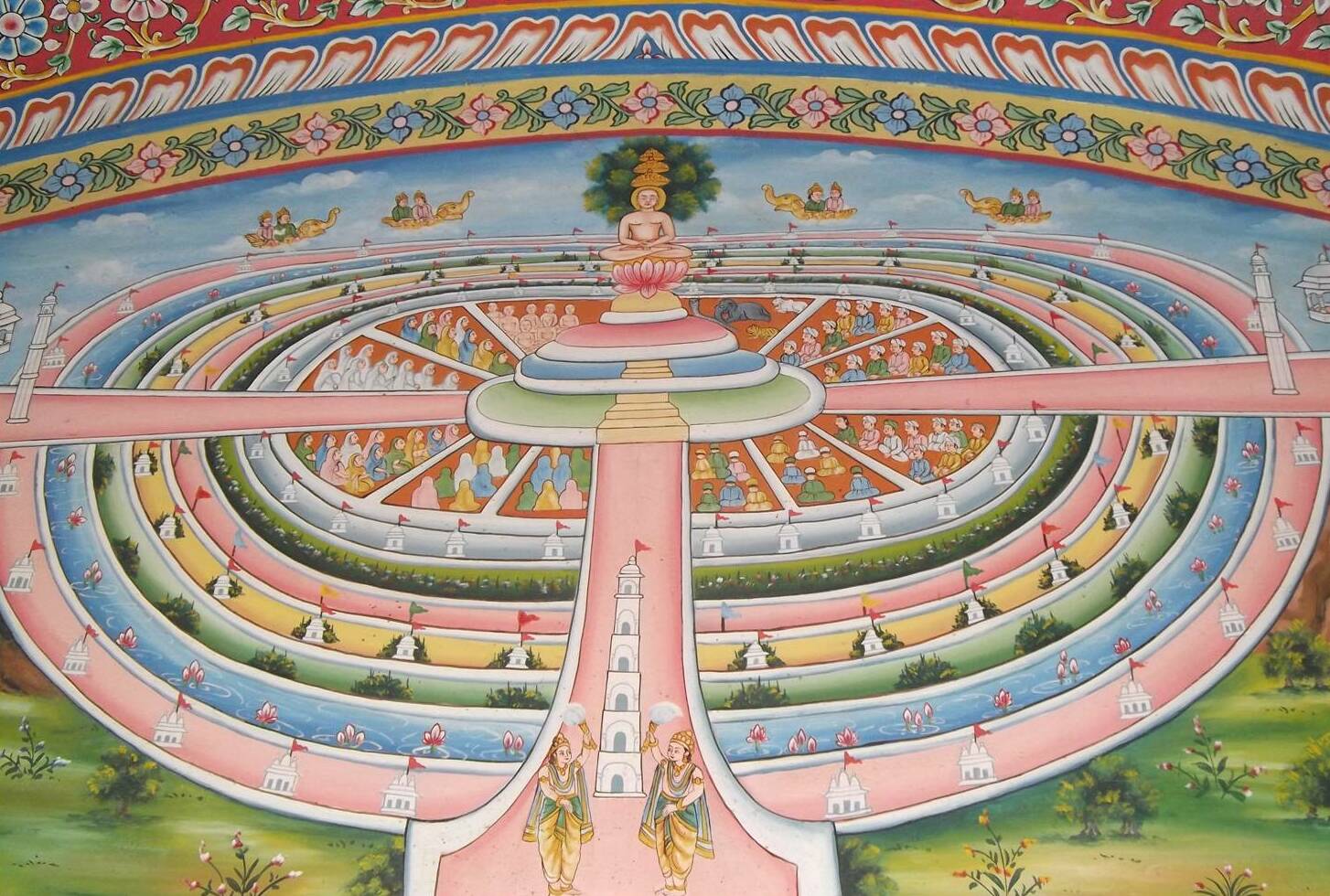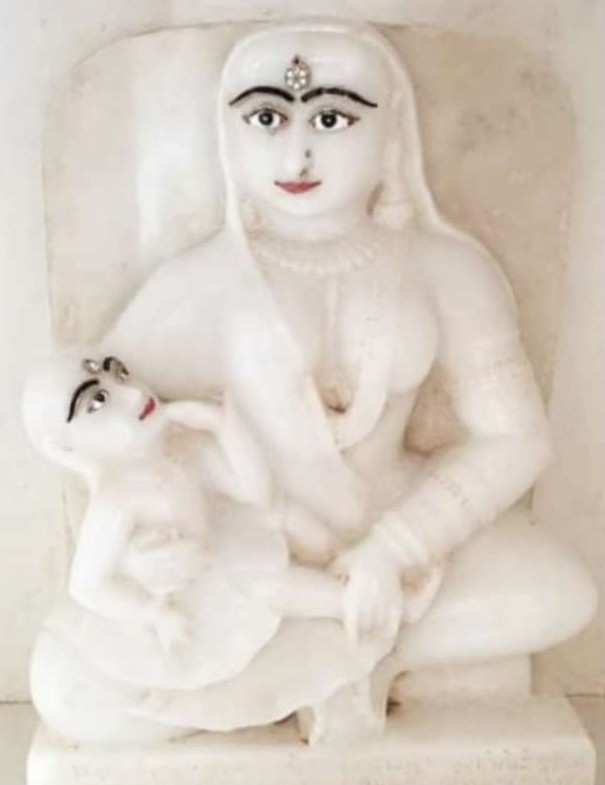|
Taranga (Jain Temple)
Taranga is a Jain pilgrimage center near Kheralu in Mehsana district, Gujarat, India, with two compounds of Jain temples that are important examples of the Māru-Gurjara style of architecture. The Ajitnatha temple, was constructed in 1161 by the Chaulukya king Kumarapala, under the advice of his teacher, Acharya Hemachandra. Both the main sects of Jainism are represented, with adjoining walled compounds: the Svetambara compound consists of 14 temples in all, and there are also five Digambara-affiliated temples at Taranga hill. History and monuments Taranga became an important Jain pilgrimage site in the 12h century. In ''Kumarapal Pratibodha'' of Somaprabhacharya, composed in Vikram Samvat 1241, states the local Buddhist king Veni Vatsaraja and Jain monk Khaputacharya had built a temple for goddess Tara and thus the town was named Tarapur. The hill is for the most part covered with brushwood and forest is, on the east and west, crossed by a road that lead to a plateau wher ... [...More Info...] [...Related Items...] OR: [Wikipedia] [Google] [Baidu] |
Jainism
Jainism ( ), also known as Jain Dharma, is an Indian religions, Indian religion. Jainism traces its spiritual ideas and history through the succession of twenty-four tirthankaras (supreme preachers of ''Dharma''), with the first in the current time cycle being Rishabhadeva, whom the tradition holds to have lived millions of years ago, the twenty-third ''tirthankara'' Parshvanatha, whom historians date to the 9th century BCE, and the twenty-fourth ''tirthankara'' Mahāvīra, Mahavira, around 600 BCE. Jainism is considered to be an eternal ''dharma'' with the ''tirthankaras'' guiding every time cycle of the Jain cosmology, cosmology. The three main pillars of Jainism are ''Ahimsa in Jainism, ahiṃsā'' (non-violence), ''anekāntavāda'' (non-absolutism), and ''aparigraha'' (asceticism). Jain monks, after positioning themselves in the sublime state of soul consciousness, take five main vows: ''ahiṃsā'' (non-violence), ''satya'' (truth), ''Achourya, asteya'' (not stealing), ''b ... [...More Info...] [...Related Items...] OR: [Wikipedia] [Google] [Baidu] |
Vikram Samvat
Vikram Samvat (IAST: ''Vikrama Samvat''; abbreviated VS) or Bikram Sambat B.S. and also known as the Vikrami calendar, is a Hindu calendar historically used in the Indian subcontinent. Vikram Samvat is generally 57 years ahead of Gregorian Calendar, except during January to April, when it is ahead by 56 years. Alongside Nepal Sambat, it is one of the two official calendars used in Nepal. In India, it is used in several states. The traditional Vikram Samvat calendar, as used in India, uses lunar months and solar sidereal years. The Nepali Bikram Sambat introduced in 1901 CE, also uses a solar sidereal year. History A number of ancient and medieval inscriptions used the Vikram Samvat. Although it was reportedly named after the legendary king Vikramaditya, the term "Vikrama Samvat" does not appear in the historical record before the 9th century; the same calendar system is found with other names, such as Krita and Malava. In colonial scholarship, the era was believed to be bas ... [...More Info...] [...Related Items...] OR: [Wikipedia] [Google] [Baidu] |
Moksa (Jainism)
Sanskrit ' or Prakrit ''mokkha'' refers to the liberation or salvation of a soul from '' saṃsāra'', the cycle of birth and death. It is a blissful state of existence of a soul, attained after the destruction of all karmic bonds. A liberated soul is said to have attained its true and pristine nature of infinite bliss, infinite knowledge and infinite perception. Such a soul is called ''siddha'' and is revered in Jainism. In Jainism, ''moksha'' is the highest and the noblest objective that a soul should strive to achieve. In fact, it is the only objective that a person should have; other objectives are contrary to the true nature of soul. With the right view, knowledge and efforts all souls can attain this state. That is why Jainism is also known as ' or the "path to liberation". According to the Sacred Jain Text, Tattvartha sutra: Bhavyata From the point of view of potentiality of , Jain texts bifurcates the souls in two categories–''bhavya'' and ''abhavya''. ''Bhavya'' ... [...More Info...] [...Related Items...] OR: [Wikipedia] [Google] [Baidu] |
Ganadhara
In Jainism, the term Ganadhara is used to refer the chief disciple of a ''Tirthankara''. In ''samavasarana'', the ''Tīrthankara'' sat on a throne without touching it (about two inches above it). Around, the ''Tīrthankara'' sits the ''Ganadharas''. According to Digambara tradition, only a disciple of exceptional brilliance and accomplishment (''riddhi'') is able to fully assimilate, without doubt, delusion, or misapprehension, the '' anekanta'' teachings of a ''Tirthankara''. The presence of such a disciple is mandatory in the ''samavasarana'' before ''Tirthankara'' delivers his sermons. ''Ganadhara'' interpret and mediate to other people the divine sound (''divyadhwani'') which the Jains claim emanates from Tirthankara's body when he preaches. The monastic sangha of Jainism is divided into a number of orders or troupes called ''gana''s, each headed by a ganadhara. In 20th century, statues depicting ''Tīrthankaras'' and ''Ganadharas'' were unearthed in Mayurbhanj district ... [...More Info...] [...Related Items...] OR: [Wikipedia] [Google] [Baidu] |
Jain Monasticism
Jain monasticism refers to the order of monks and nuns in the Jain community and can be divided into two major denominations: the ''Digambara'' and the ''Śvētāmbara''. The monastic practices of the two major sects vary greatly, but the major principles of both are identical. Five ''mahāvratas'' (Great Vows), from Mahavira's teachings, are followed by all Jain ascetics. Historians believe that a united Jain ''sangha'' (community) existed before 367 BCE, about 160 years after the ''moksha'' (liberation) of Mahavira. The community then gradually divided into the major denominations. Terminology ''Digambaras'' use the word ' for male monastics and ''aryika'' for female monastics. ''Digambara monks'' are also called ''nirgrantha'' (without bonds). ''Śvētāmbaras'' use the word ''sadhvi''s for female monastics. History Mahavira had 11 chief disciples, Indrabhuti Gautama being the most senior. Each chief disciple was made responsible for 250 to 500 monks. The Jain sangha ... [...More Info...] [...Related Items...] OR: [Wikipedia] [Google] [Baidu] |
Padmavati (Jainism)
Padmāvatī is the protective goddess or śāsana devī (शासनदेवी) of Parshvanatha, Pārśvanātha, the twenty-third Jain tirthankara, tīrthāṅkara, complimenting Parshwa yaksha in Swetambara and Dharanendra in digambar the shasan deva. She is a yakshi (attendant goddess) of Parshwanatha. Jain Biography There is another pair of souls of a nāga and Nāga, nāginī who were saved by Parshwanath while being burnt alive in a log of wood by the tapas kamath, and who were subsequently reborn as Indra (Dharanendra in particular) and Padmavati (different from sashan devi) after their death. According to the Jainism, Jain tradition, Padmavati and her husband Dharanendra protected Lord Parshvanatha when he was harassed by Meghmali. After Padmavati rescued Parshvanatha grew subsequently powerful in to yakshi, a powerful tantric deity and surpassed other snake goddess ''Vairotya''. Legacy Worship Goddess Padmavati along with Ambika (Jainism), Ambika, Chakreshvar ... [...More Info...] [...Related Items...] OR: [Wikipedia] [Google] [Baidu] |
Vastupala
Vastupāla (died 1240 CE) was a prime minister of the Vāghelā king Vīradhavala and his successor Vīsaladeva, who ruled in present-day Gujarat region of India, in the early 13th century. Although he served in an administrative and military capacity, he was also a patron of art, literature and public works. He, together with his brother Tejapāla, assisted in the restoration of peace in the kingdom, and served in a number of campaigns against Lāṭa, Godraha, Kutch and the Delhi Sultanate. The brothers were instrumental in the construction of the , Luniga-vasahi temple on Mount Abu and the Vastupala-vihara on Girnar. Ancestry and family Vastupala and his brother Tejapala were born to a Pragavata, or Porwad as they are known today, Jain family in Anahilavada Patan (modern day Patan, Gujarat). Vijayasenasuri, a Jain monk of Nagendra Gachchha, was their clan guru. Extensive information on their ancestry has been drawn from literary works and inscriptions: in ''Naranarayanana ... [...More Info...] [...Related Items...] OR: [Wikipedia] [Google] [Baidu] |
Samavasarana
In Jainism, Samavasarana or Samosharana ("Refuge to All") is the divine preaching hall of the Tirthankara, stated to have more than 20,000 stairs in it. The word ''samavasarana'' is derived from two words, ''sama'', meaning general and ''avasara'', meaning opportunity. It is an important feature in Jain art. The Samavasarana seems to have replaced the original Jain stupa as an object of worship. Samavasarana Hall In samavasarana hall, the ''tirthankara'' sits on a throne without touching it (about two inches above it). Around the tirthankara sit the ''ganadharas'' (chief disciples). Living beings sit in the following order: *In the first hall, ascetics *In the second hall, one class of deva ladies *In the third hall, ''aryikas'' (nuns) and laywomen *In the next three halls, three other classes of deva ladies *In the next four halls, the four classes of devas (heavenly beings) *Men, in the eleventh hall *Animals, in the last hall According to Jain texts, there would be four w ... [...More Info...] [...Related Items...] OR: [Wikipedia] [Google] [Baidu] |
Rishabha
Rishabhanatha, also ( sa, ऋषभदेव), Rishabhadeva, or Ikshvaku is the first (Supreme preacher) of Jainism and establisher of Ikshvaku dynasty. He was the first of twenty-four teachers in the present half-cycle of time in Jain cosmology, and called a "ford maker" because his teachings helped one across the sea of interminable rebirths and deaths. The legends depict him as having lived millions of years ago. He was the spiritual successor of Sampratti Bhagwan, the last Tirthankar of previous time cycle. He is also known as Ādinātha which translates into "First (''Adi'') Lord (''nātha'')", as well as Adishvara (first Jina), Yugadideva (first deva of the yuga), Prathamarajeshwara (first God-king), Ikshvaku and Nabheya (son of Nabhi). Along with Mahavira, Parshvanath, Neminath, and Shantinath; Rishabhanath is one of the five Tirthankaras that attract the most devotional worship among the Jains. According to traditional accounts, he was born to king Nabhi and q ... [...More Info...] [...Related Items...] OR: [Wikipedia] [Google] [Baidu] |
Tirthankara
In Jainism, a ''Tirthankara'' (Sanskrit: '; English: literally a 'ford-maker') is a saviour and spiritual teacher of the ''dharma'' (righteous path). The word ''tirthankara'' signifies the founder of a '' tirtha'', which is a fordable passage across the sea of interminable births and deaths, the '' saṃsāra''. According to Jains, a ''Tirthankara'' is an individual who has conquered the ''saṃsāra'', the cycle of death and rebirth, on their own, and made a path for others to follow. After understanding the true nature of the self or soul, the ''Tīrthaṅkara'' attains '' Kevala Jnana'' (omniscience). Tirthankara provides a bridge for others to follow the new teacher from ''saṃsāra'' to ''moksha'' (liberation). In Jain cosmology, the wheel of time is divided in two halves, Utsarpiṇī' or ascending time cycle and ''avasarpiṇī'', the descending time cycle (said to be current now). In each half of the cosmic time cycle, exactly twenty-four ''tirthankaras'' grace thi ... [...More Info...] [...Related Items...] OR: [Wikipedia] [Google] [Baidu] |
Gavaksha
In Indian architecture, gavaksha or chandrashala (''kudu'' in Tamil, also nāsī) are the terms most often used to describe the motif centred on an ogee, circular or horseshoe arch that decorates many examples of Indian rock-cut architecture and later Indian structural temples and other buildings. In its original form, the arch is shaped like the cross-section of a barrel vault. It is called a chaitya arch when used on the facade of a chaitya hall, around the single large window. In later forms it develops well beyond this type, and becomes a very flexible unit, "the most common motif of Hindu temple architecture". ''Gavākṣha'' (or gavaksa) is a Sanskrit word which means "bull's or cow's eye". In Hindu temples, their role is envisioned as symbolically radiating the light and splendour of the central icon in its sanctum. Alternatively, they are described as providing a window for the deity to gaze out into the world. Like the whole of the classic chaitya, the form originated i ... [...More Info...] [...Related Items...] OR: [Wikipedia] [Google] [Baidu] |








